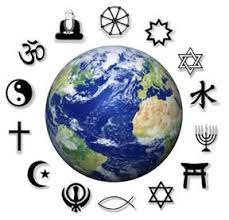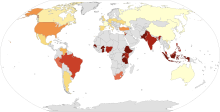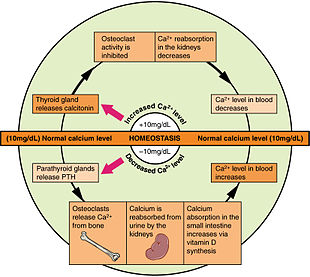We're for all- ALL are for us for the greater interest of Humanism-Truth-Facts-Friendship-Unity-Participation including Physico-Mental Sound Health with Spirituality, enrichment through ''TOTAL HEALTH SOLUTION'' to a Well-furnished GOALofTruth alloted for all in real sense ;
From wikipedia & other reliable sources ( Poets, Writers, Thinkers, Researchers, Free Lancers, Philosophers, Theologists, Scientists, Orators, Sociologists and Photographers +Artists-Musicians & etc.) we can learn as follows :

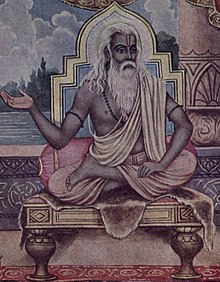
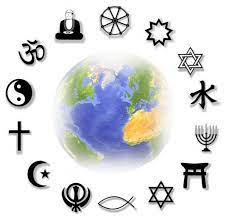
"The Bhagavad Gita (/ˌbʌɡəvəd ˈɡiːtɑː/; Sanskrit: श्रीमद्भगवद्गीता, romanized: śrīmadbhagavadgītā, lit. 'The Song by God';[a]),[1] often referred to as the Gita (IAST: gītā), is a 700-verse Hindu scripture that is part of the epic Mahabharata (chapters 23–40 of book 6 of the Mahabharata called the Bhishma Parva), dated to the second half of the first millennium BCE and is typical of the Hindu synthesis. It is considered to be one of the holy scriptures for Hinduism.[2]
The Gita is set in a narrative framework of dialogue between Pandava prince Arjuna and his guide and charioteer Krishna. At the start of the dharma yuddha (or the "righteous war") between the Pandavas and the Kauravas, Arjuna is preoccupied by a moral and emotional dilemma and despairs about the violence and death the war will cause in the battle against his kin.[3] Wondering if he should renounce the war, he seeks Krishna's counsel, whose answers and discourse constitute the Gita. Krishna counsels Arjuna to "fulfil his Kshatriya (warrior) duty to uphold the dharma" through Karma ("selfless action").[web 1][4][note 1] The Krishna–Arjuna dialogues cover a broad range of spiritual topics, touching upon ethical dilemmas and philosophical issues that go far beyond the war that Arjuna faces.[1][5][6]
Numerous commentaries have been written on the Bhagavad Gita with widely differing views on the essentials. According to some, the Bhagavad Gita was written by the god Ganesha, as told to him by Veda Vyasa. Vedanta commentators read varying relationships between the Self and Brahman in the text: Advaita Vedanta sees the non-dualism of Atman (Self) and Brahman (universal Self) as its essence';[7] Bhedabheda and Vishishtadvaita see Atman and Brahman as both different and not different; while Dvaita Vedanta sees the dualism of Atman (Self) and Brahman as its essence. The setting of the Gita in a battlefield has been interpreted as an allegory for the ethical and moral struggles of human life.[6][8][9]
The Bhagavad Gita presents a synthesis[10][11] of Hindu ideas about dharma,[10][11][12] theistic bhakti,[12][13] and the yogic ideals[11] of moksha.[11] The text covers Jñāna, Bhakti, Karma, and Rāja yogas (spoken of in the 6th chapter),[13] incorporating ideas from the Samkhya-Yoga philosophy.[web 1][note 2]
The Bhagavad Gita is the most revered of all the Hindu texts,[14] and has a unique pan-Hindu influence.[15][16] The Gita's call for selfless action inspired many leaders of the Indian independence movement including Bal Gangadhar Tilak and Mahatma Gandhi, the latter referring to it as his "spiritual dictionary"''.[17]
Largest religious groups
| Religion | Followers (billions) |
Cultural tradition | Founded | References |
|---|---|---|---|---|
| Christianity | 2.4 | Abrahamic religions | Middle East | [31][32] |
| Islam | 1.9 | Abrahamic religions | Arabia (Middle East) | [33][34] |
| Hinduism | 1.2 | Indian religions | Indian subcontinent | [31] |
| Buddhism | 0.5 | Indian religions | Indian subcontinent | [32] |
| Folk religion | 0.4 | Regional | Worldwide | [35] |
Medium-sized religions
| Religion | Followers (millions) |
Cultural tradition | Founded | References |
|---|---|---|---|---|
| Shinto | 100 | Japanese religions | Japan | [36][37] |
| Taoism | 12–173 | Chinese religions | China | [38] |
| Vodou | 60 | African religions | Benin (Dahomey) | [39] |
| Sikhism | 30 | Indian religions | Indian subcontinent, 15th century | [40] |
| Judaism | 14.5 | Abrahamic religions | The Levant (Middle East) | [31][41] |
| Spiritism | 5-15 | New religious movements | France | [42] |
| Korean shamanism | 5–15 | Korean religions | Korea | [43] |
| Caodaism | 5–9 | Vietnamese religions | Vietnam, 20th century | [44] |
| Confucianism | 6–7 | Chinese religions | China | [45] |
| Baháʼí Faith | 5–7.3 | Abrahamic religions | Iran, 19th century | [46][47][nb 1] |
| Jainism | 4–5 | Indian religions | Indian subcontinent, 7th to 9th century BCE | [48][49] |
| Cheondoism | 3–4 | Korean religions | Korea, 19th century | [50] |
| Hoahaoism | 1.5–3 | Vietnamese religions | Vietnam, 20th century | [51] |
| Tenriism | 1.2 | Japanese religions | Japan, 19th century | [52] |
| Druze | 1 | Abrahamic religions | Egypt, 9th century | [53] |
By region
- Religions by country according to The World Factbook – CIA[54]
- Religion by region
- Religion in Africa
- Religion in Antarctica
- Religion in Asia
- Religion in the Middle East
- Muslim world (SW Asia and N Africa)
- Religion in Europe
- Religion in North America
- Religion in Oceania
- Religion in South America
Trends in adherence
| 1970–1985 (%)[56] | 1990–2000 (%)[57][58] | 2000–2005 (%)[59] | 1970–2010 (%)[47] | |
|---|---|---|---|---|
| Baháʼí Faith | 3.65 | 2.28 | 1.70 | 4.26 |
| Buddhism | 1.67 | 1.09 | 2.76 | |
| Christianity | 1.64 | 1.36 | 1.32 | 2.10 |
| Confucianism | 0.83 | |||
| Hinduism | 2.34 | 1.69 | 1.57 | 2.62 |
| Islam | 2.74 | 2.13 | 1.84 | 4.23 |
| Jainism | 2.60 | |||
| Judaism | 1.09 | -0.03 | ||
| Sikhism | 1.87 | 1.62 | 3.08 | |
| Shinto | -0.83 | |||
| Taoism | 9.85 | |||
| Zoroastrianism | 2.5 | |||
| unaffiliated | 0.37 |
Maps of self-reported adherence
-
 Map showing the prevalence of "Abrahamic religion" (purple), and "Indian religion" (yellow) religions in each country.
Map showing the prevalence of "Abrahamic religion" (purple), and "Indian religion" (yellow) religions in each country. -
 Map showing the relative proportion of Christianity (red) and Islam (green) in each country as of 2006
Map showing the relative proportion of Christianity (red) and Islam (green) in each country as of 2006 -
% Christian population% Islam population
COMMENTS FROM Dr. P. C. Majumder (- Author, Writer, Humanist, Physician (Physico-Mental & Spiritual) and Cosmopolitan Researcher in favor of ALL-CREATION Universally RESIDE++++ in positive ways for universal UNITY & LOVE++++) as follows:
1.
2.
3. 4. 5. 6. 7. 8. 8. 9. 10.
We're for all- ALL are for us for the greater interest of Humanism-Truth-Facts-Friendship-Unity-Participation to a Well-furnished GOAL of Truth from which all shall have ++++;
We're indebted to WIKIPEDIA +WHO for a short while and as 'Guardian QUOTATION' from Global WISER ONE. And have quoted many images, article's, writings etc. by great & humanist writers+++ from global thinkers, Well-wishers, Wiseman, Humanists and Others Living-Nonlivings in favor of HUMANISM to share more answers of Researchers-readers+++++....
To reach the 'GOAL of FULFILNESS' unitedly to alive in the "DESTINATION of TRUTH-FACTS-CHARMEST AMICABLITY" of Natural Joyful POSSIBILITIES+++
BREAST CANCER, TUMOR, Arsenic+Chemical Poisoning, Corona, Heart-Lung diseases, Neurological-Hormonal-Immunal-Infectious diseases with related complexities are possible to cure properly-easily-scientifically-accurately (100%) by our positive medical services only with+++++balance confirming
Medicine-Food control-proper nursing-medicinal massage-Medicinal Yogas- Meditation, Physiotherapy special etc. without side effects & Repeatation as per contract through user-friendly approved ways of CURE++++. please fill our form as below or click:
After confirming contract-letter between you+++. We serve you properly with no Chemo-therapy-radiation therapy -SURGICAL Complexities (Physical-Mental) to CURE+++ upto our Limit to recover your both-health from illness.



